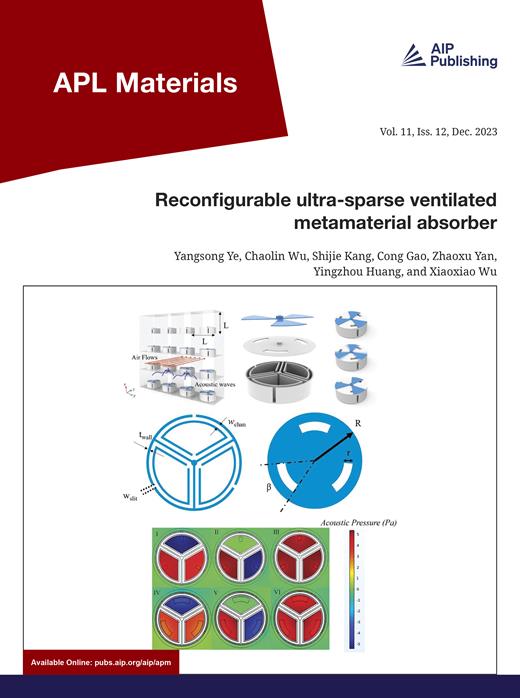Solid phase epitaxy of SrRuO3 encapsulated by SrTiO3 membranes
IF 5.3
2区 材料科学
Q2 MATERIALS SCIENCE, MULTIDISCIPLINARY
引用次数: 0
Abstract
Solid phase epitaxy (SPE) has been widely employed for various thin-film materials, making it valuable for industrial applications due to its scalability. In complex oxides, SPE has been limited to a few materials because of the challenges in maintaining stoichiometric control during growth, particularly when volatile phases are present at high temperatures. Here, we investigate the impact of encapsulation layers on the SPE of complex oxides, using SrRuO3 (SRO) as a model system. An amorphous SRO layer was deposited on a SrTiO3 (STO) substrate, followed by the transfer of a single-crystalline STO membrane as an encapsulation layer in order to suppress the evaporation of volatile species (RuO2) during the SPE process. Whereas both encapsulated and unencapsulated SRO layers were successfully crystallized, the unencapsulated films suffered a substantial loss of Ru ions—exceeding 20%—compared to their encapsulated counterparts. This loss of Ru ions led to a loss of metallicity in the unencapsulated SRO layers, whereas the encapsulated layers retained their metallic ferromagnetic properties. This study demonstrates that the encapsulation provided by oxide membranes effectively suppresses stoichiometric loss during SPE, presenting a new strategy in stabilizing a broader class of functional oxides as epitaxial thin films.由 SrTiO3 膜封装的 SrRuO3 的固相外延
固相外延(SPE)已被广泛应用于各种薄膜材料,其可扩展性使其在工业应用中具有重要价值。在复杂的氧化物中,由于在生长过程中保持化学计量控制的挑战,特别是在高温下存在挥发性相的情况下,固相外延仅限于少数几种材料。在此,我们以 SrRuO3 (SRO) 为模型系统,研究了封装层对复杂氧化物 SPE 的影响。无定形 SRO 层沉积在 SrTiO3(STO)基底上,然后转移单晶 STO 膜作为封装层,以抑制固相萃取过程中挥发性物质(RuO2)的蒸发。虽然封装和未封装的 SRO 膜层都能成功结晶,但与封装膜层相比,未封装膜层的 Ru 离子大量流失,流失量超过 20%。这种 Ru 离子的损失导致未封装的 SRO 层失去了金属性,而封装层则保持了其金属铁磁特性。这项研究表明,氧化物膜提供的封装能有效抑制 SPE 过程中的化学计量损失,为稳定更广泛的功能氧化物外延薄膜提供了一种新策略。
本文章由计算机程序翻译,如有差异,请以英文原文为准。
求助全文
约1分钟内获得全文
求助全文
来源期刊

APL Materials
NANOSCIENCE & NANOTECHNOLOGYMATERIALS SCIE-MATERIALS SCIENCE, MULTIDISCIPLINARY
CiteScore
9.60
自引率
3.30%
发文量
199
审稿时长
2 months
期刊介绍:
APL Materials features original, experimental research on significant topical issues within the field of materials science. In order to highlight research at the forefront of materials science, emphasis is given to the quality and timeliness of the work. The journal considers theory or calculation when the work is particularly timely and relevant to applications.
In addition to regular articles, the journal also publishes Special Topics, which report on cutting-edge areas in materials science, such as Perovskite Solar Cells, 2D Materials, and Beyond Lithium Ion Batteries.
 求助内容:
求助内容: 应助结果提醒方式:
应助结果提醒方式:


